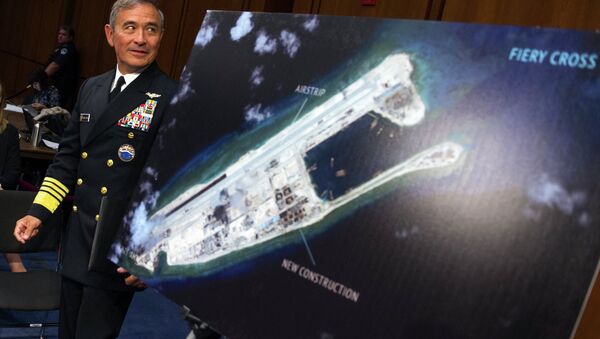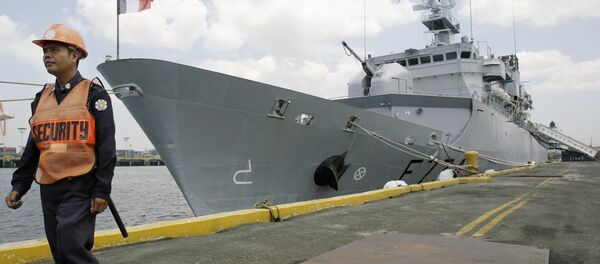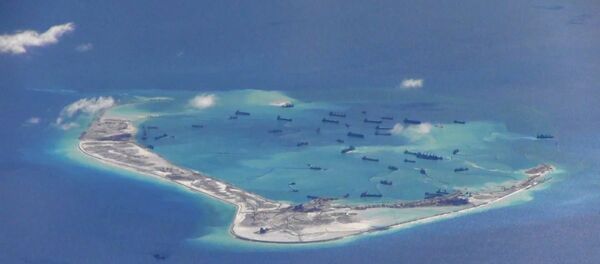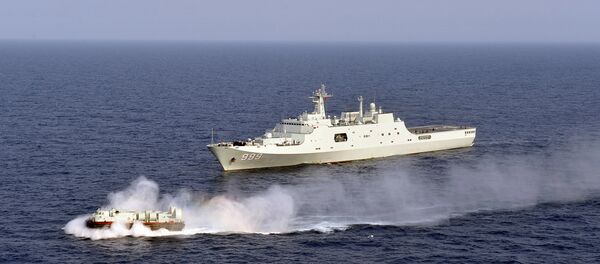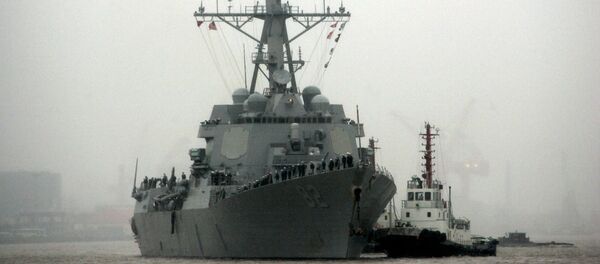On Tuesday, the USS Lassen conducted a patrol within the 12-mile limit of Beijing’s artificial islands in the Spratly archipelago. While the US insisted that the incident was a routine freedom-of-navigation operation, China was quick to rebuke the aggressive actions.
"China strongly urges the US side to conscientiously handle China’s serious representations, immediately correct its mistake and not take any dangerous or provocative acts that threaten China’s sovereignty and security interests," the Chinese Foreign Ministry said in a statement.
But according to Reuters, the Larssen’s patrol was a long time coming, with Pentagon officials pushing for a naval challenge to Chinese claims since mid-May. Citing anonymous defense officials, the Department of Defense continuously ran up against opposition from the White House and State Department.
Part of the reason for the repeated delays was that the Obama administration wanted to avoid any appearance of retaliation for other disputes between the two nations. Conducting patrols soon after the US accused China of being involved in the US Office of Personnel Management hack, for example, would send the wrong message.
"The concern was that, if we looked like we were responding to something the Chinese had done, it would undermine our assertion that this is a matter of international law, and our rights to navigate the seas," one official told Reuters.
According to these officials, the delays allowed Beijing to solidify its territorial claims, and thereby made Tuesday’s patrol tenser than it would have been five months ago.
"Delaying the patrols actually made it a bigger deal," the source said. "This may have diminished the initial strategy that these patrols should be a regular, ordinary matter."
It wasn’t until September that the Obama administration at last conceded to the advice of the Defense Department.
"All of this attention that has been given to it has undermined the effectiveness of freedom of navigation operations," Bonnie Glaser, a security expert at Washington’s Center for Strategic and International Studies, told Reuters.
According to another US official, the delays also gave the Obama administration time to analyze all potential risks of a US-China military confrontation. Washington wanted to make sure that Beijing was fully aware that the message being sent was a challenge to China’s territorial claims, not an overt military offensive.
"Our aim was to ensure we made smart decisions to advance our strategic objectives in the Asia-Pacific region, including on maritime issues," the official told Reuters.
A highly contested waterway through which nearly $5 trillion in trade passes annually, China lays claims to most of the South China Sea. There are, however, overlapping claims by the Philippines, Vietnam, Taiwan, Brunei, and Malaysia.
The United States has argued that Beijing’s construction of artificial islands atop submerged reefs in the Spratly archipelago do not grant China territorial claims. The chain lies nearly 1,000 miles from the Chinese mainland, in what the US considers to be international waters.
China maintains that it has every right to build within its own territory, and that the islands will be used primarily for humanitarian purposes.
Since Beijing’s land reclamation efforts began, the United States has conducted a number of military exercises in the region and pressured Pacific allies into taking more aggressive action against China.
On Wednesday, US officials also said that more patrols would be conducted in the future.
"We will do it again. We will sail in international waters at a time and place of our choosing," an anonymous official told AFP.

